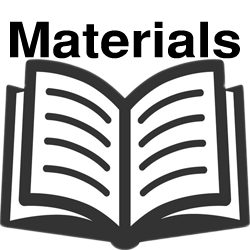Section outline
-
Welcome Message for my Students
Course Rationale:
The course is intended to teach the students the basic techniques that underlie the practice of Compiler Construction. The course will introduce the theory and tools that can be standard employed in order to perform syntax-directed translation of a high-level programming language into an executable code.These techniques can also be employed in wider areas of application, whenever we need a syntax-directed analysis of symbolic expressions and languages and their translation into a lower-level description. They have multiple applications for man-machine interaction, including verification and program analysis.
Course Objective:
The main objective of this course is to introduce the major concept areas of language translation and compiler design and to develop an awareness of the function and complexity of modern compilers. This course is a study of the theory and practice required for the design and implementation of interpreters and compilers for programming languages.
Course Outcomes:
CO1: Explain various phases of a compiler. CO2: Design token recognizer using modern tools. CO3: Design Top-down and Bottom-up parsing Techniques.
CO4: Translate given input to intermediate code.
CO5: Identify various types of optimizations on intermediate code and generate assembly code.
-
Reference Books/ Materials
1. Compiler Principles, Techniques and Tools By Aho, Ullman, Sethi [Download]
Reference Books:
1. Implementations of Compiler, A new approach to Compilers including the algebraic methods By Yunlin su, Song Y. Yan. [Download]
2. Compiler construction, Principles and Practice, By Kenneth C Louden. [Download]
3. Basics of Compiler Design by Torben. [Download]
-
-
-
Timeline
-
Fix Appointment
-
-
Discussion Topics:
- Overview of language processing
- Discuss about pre-processors – compiler – assembler – interpreters.
- Discuss about linkers & loaders
- Distinguish in between Interpreter vs. Compiler.
Expected Learning Outcomes:
- Differentiate compiler with interpreter.
- Recognize the language processing system
- Conceptually understand the application of compiler.
-
-
-
Discussion Topics:
- Learn about the structure of a compiler.
- Learn about the phases of a compiler.
Expected Learning Outcomes:
- Design the basic structure.
- Recognize various phases of compiler
-
Assignment 1 (Lab)
-
Marks: 5
Assignment 1 Submission Guide Line:
1.Naming format of your file (yourname_id.cpp).
2.Submit the file .
-
-
-
Discussion Topics:
- Learn about Lexical Analysis –Role of Lexical Analysis
- Discuss about Lexical Analysis Vs. Parsing
- Discuss about Token, patterns and Lexemes
- Discuss about Quiz Test.
Expected Learning Outcomes:
- Distinguish Token, patterns and Lexemes
- Recognize Lexical errors.
-
-
-
Discussion Topics:
- Discuss about Regular definitions for the language constructs
- Discuss about Transition diagram for recognition of tokens.
Expected Learning Outcomes:
- Capable to Design Transition Diagram.
- Create Regular expression from sentence.
-
Assignment 2 (Lab)
-
Marks: 5
Assignment 1 Submission Guide Line:
1.Naming format of your file (yourname_id.cpp).
2.Submit the file .
-
-
-
Discussion Topics:
- Discuss about Automata Theory.
- Discuss and Illustrate NFA and DFA.
Expected Learning Outcomes:
- Understand Tuples.
- Design and Construct NFA and DFA
-
Assignment 3 (Lab)
-
Marks: 5
Assignment 1 Submission Guide Line:
1.Naming format of your file (yourname_id.cpp).
2.Submit the file .
-
Quiz 1
-
Marks: 15
Quiz1 Submission Guide Line:
1.Scan your script using camscanner.
2.Upload the PDF in the google form.
-
-
-
Discussion Topics:
- Discuss about subset construction method.
- Discuss and Illustrate the techniques to construct DFA
- Discuss about Class Test.
Expected Learning Outcomes:
- Design DFA from NFA.
- Distinguish NFA and DFA.
- Recognize the benefit to construct DFA.
-
Assignment 4 (Lab)
-
Marks: 5
Assignment 1 Submission Guide Line:
1.Naming format of your file (yourname_id.cpp).
2.Submit the file .
-
-
Mid
-
Marks: 25
Mid Exam Submission Guide Line:
1.Scan your script using camscanner.
2.Upload the PDF(CSE421_YourName_yourID.PDF)
-
-
-
Discussion Topics:
- Discuss about LMD and RMD
- Discuss and Illustrate the elimination techniques
Expected Learning Outcomes:
- Recognize the elimination techniques
- Understand the importance of Left Elimination
-
Assignment 5 (Lab)
-
Marks: 5
Assignment Submission Guide Line:
1.Naming format of your file (yourname_id.cpp).
2.Submit the file .
-
-
-
Discussion Topics:
- Discuss and illustrate the rules for FIRST and FOLLOW Function.
- Discuss the techniques to find FIRST and FOLLOW function.
Expected Learning Outcomes:
- Recognize specific tokens
- Identify FIRST and FOLLOW
- Construct LL1 Table
-
-
-
Discussion Topics:
- Discuss and illustrate the rules for FIRST and FOLLOW Function.
- Discuss the techniques to find FIRST and FOLLOW function.
Expected Learning Outcomes:
- Recognize specific tokens
- Identify FIRST and FOLLOW
- Construct LL1 Table
-
-
-
Discussion Topics:
- Discuss abstract syntax trees and Directed acyclic graph
- Discuss and illustrate three address code, quadruples, and triples.
- Discuss about Class Text.
Expected Learning Outcomes:
- Recognize techniques to eliminate common sub tree.
- Design triples.
-
-
-
Discussion Topics:
- Discuss about the rules for leader selection.
- Discuss and illustrate the techniques to create basic block.
- Discuss the techniques to design flow graph.
Expected Learning Outcomes:
- Recognize three address codes.
- Design basic blocks for high level languages.
- Understand the necessity of flow graph.
-
-
-
Discussion Topics:
- Discuss about Machine independent code optimization.
- Discuss and illustrate the techniques of code optimization.
Expected Learning Outcomes:
- Recognize machine independent code.
- Able to apply techniques to optimize codes.
-
-
Semester Final


























